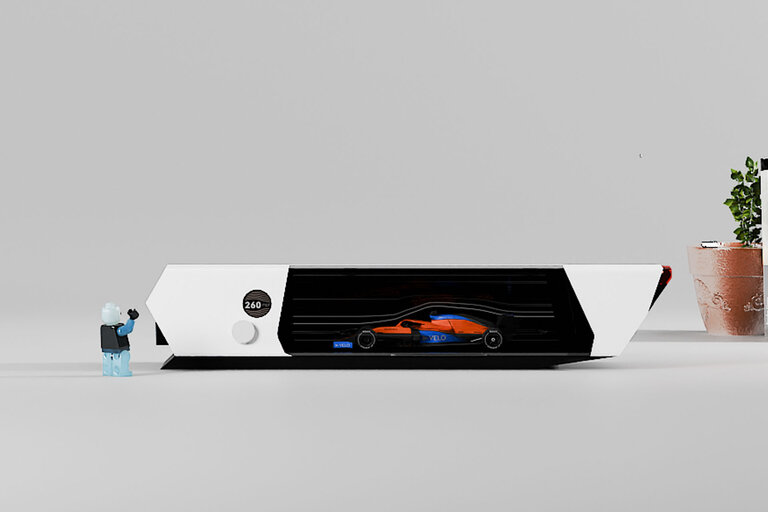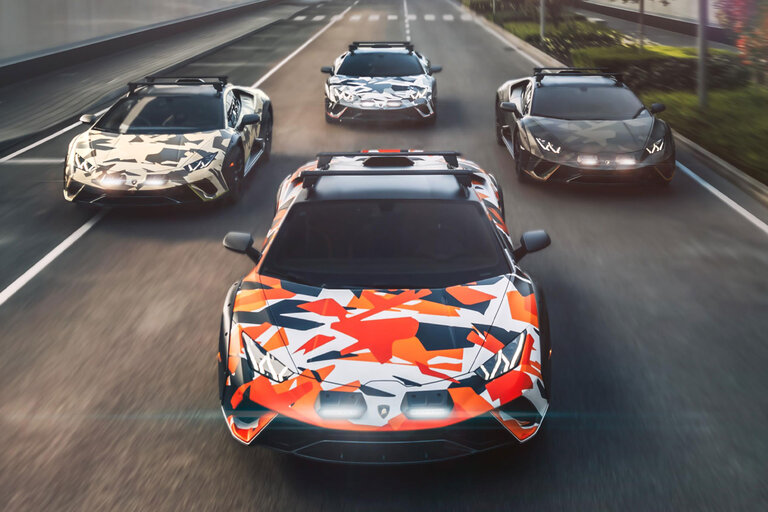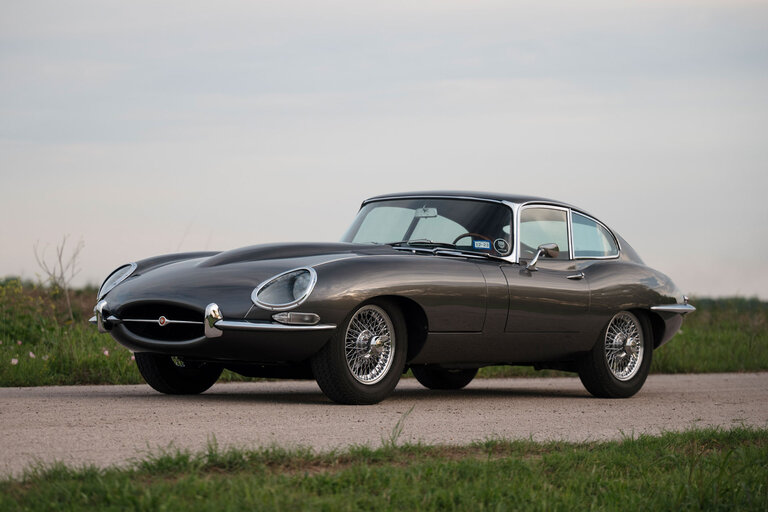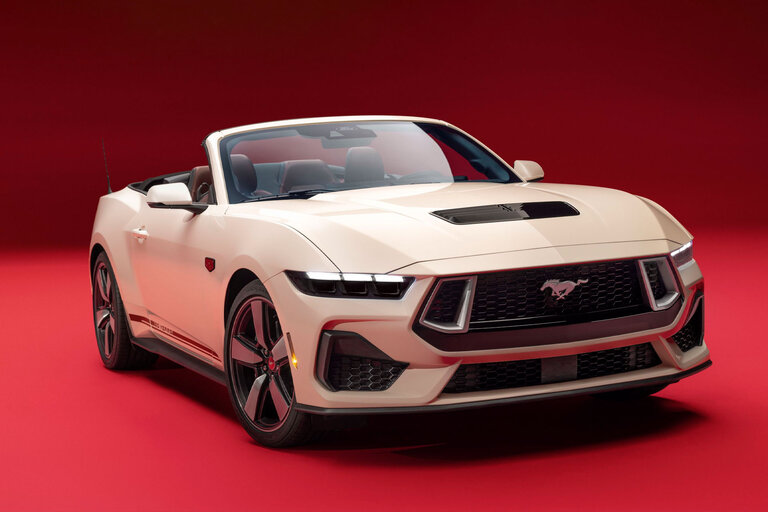
From the September 2000 issue of Car and Driver.
You may have noticed that almost every station-wagon introduction in the past few years has inspired observations about wagons making a comeback. You may also have noticed that we’ve been just as guilty of these incorrect observations as others, and perhaps even more than most, since we think wagons make a lot more sense in most applications than do sport-utes. They’re handier and better-looking, and they get better fuel economy—remember fuel economy? And they’re more fun to drive.
However, the truth is that all this nattering about the wagon revival is distinctly parochial. Wagons may be an endangered species in the United States, where we’ve been a little preoccupied with sport-utilities—perhaps you’ve noticed this?—but they’ve never faltered elsewhere, particularly in Europe, where wagons account for almost 50 percent of all auto sales, year in and year out. And even though European and Asian automakers limit the range of models exported to this country, there currently are 20 station-wagon nameplates sold here.
U.S. automakers, in contrast, offer five wagons—three from Ford (Focus, Taurus, and Sable), two from General Motors (the small Saturn and the slightly larger Saturn)—but none from DaimlerChrysler, although the PT Cruiser does fall into a sort of twilight zone.
None of these domestic offerings, we should add, approaches the panache and performance of our test subject. And after all, where does it say that the need for a little extra cargo capacity should automatically sentence one to understeer, wallow, and generally somnambulistic motoring?
Evidence of the ongoing international vitality of the wagon is BMW’s new 323i. It’s new only here in the U.S.; it was introduced in Europe about a year ago, the third renewal of a 3-series wagon tradition that dates to 1988. In fact, BMW claims to have pioneered the concept of a wagon in the sport-compact class.
Well, all that history probably won’t move you one micron closer to a contract, right? So let’s take a look at the tangibles.
Along with the convertible, the wagon represents the completion of the latest renewal of the regular 3-series lineup, a makeover that began with the rollout of the sedans for 1999. We’re still waiting for the arrival of the M versions, of course, but the M3 ain’t exactly mainstream goods. And we don’t expect to see an M badge on a station wagon around here anytime soon.
The wagon shares the same chassis and body dimensions, with fractional distinctions, as the rest of the fleet. Ditto the powertrains. Ditto, that is, everywhere but here. Although the 3-series wagon is offered in five configurations in Europe—318i, 320i, 328i, 320d, and 330d—U.S. buyers will have a choice of just one: the 323i, propelled by a 2.5-liter DOHC 24-valve inline six.
We can understand BMW’s holding back the lame-duck 2.8-liter six, but there are no plans to send us the new 3.0-liter, either. Why no 330i wagon? BMW cites “cost sensitivity” in this market segment, where the major competitors are the Audi A4 1.8 Avant Quattro and the Volvo V40, both of which have substantially lower base prices ($27,265 and $24,975, respectively). To illustrate the price point, today’s 328i sedan has a base of $33,970, and that’s $6410 north of a 323i’s, or about $21.44 for each extra cubic centimeter of engine displacement, a pretty serious premium. However, BMW insiders also hint that the lively performance of a 330i wagon might very well damp the enthusiasm for its 540i wagon, since the minimum payout for the bigger car is $42,772.
Augmented by BMW’s VANOS variable-valve-timing system, the 2.5 straight-six is smooth and has sweet torque traits, but even so, its 170-hp peak seems pallid compared with the 2.8-liter’s 193. And it’ll seem positively anemic when the 225-hp 3.0-liter six comes on stream in 2001.
The 2.5-liter’s relatively tame output is magnified by the one significant dimensional distinction between wagon and sedan, measurable at the scales. The last 323i sedan to pass our way (C/D, April 1999) weighed in at 3120 pounds, which is 236 pounds lighter than this wagon, a distinction attributable, as you’d expect, to the wagon’s extra superstructure and the glass aft of the C-pillar.
What you might not expect, however, is how small a performance price you’ll pay for the expanded cargo capacity. We were pleasantly surprised when the wagon hauled its mass to 60 mph in 7.4 seconds, just 0.2 slower than the sedan and 0.2 quicker than the factory projections.
How’d they do that? Simple arithmetic. The 323i sedan has a relatively tall 3.07:1 final drive. The wagon uses a 3.46:1 rear end, as does the even heavier convertible, which helps in the getaway department. There’s a small top-speed penalty—the wagon is redline-limited to 132 mph versus 134 for the sedan—but we suspect that will trouble very few owners, particularly those owners who travel with supervisory driving help (read: spouses).
So as much as we’d prefer the extra thrust of the bigger six, we think the performance of the 2.5-liter engine stacks up pretty well, particularly when it’s allied with the standard five-speed manual transmission, whose precise shifting we’ve extolled in every encounter. So equipped, the small wagon’s acceleration matches up almost stride for stride with the more powerful Audi A4 2.8 Avant Quattro (“Fast Freighters,” C/D, December 1997) and is distinctly quicker than the V40 we tested in November 1999, although V40s are held back by their use of an automatic.
Of course, acceleration is only one element in a car’s fun-to-drive equation, something that BMW understands better than most. The other critical factor is giving the driver the sense of the car as an extension of his or her will, the trait that separates the sharks from the cows in the car biz. In this sense, the 323i wagon acquits itself very well, thanks in no small measure to the optional $1700 Sport package, which lends more authority to the suspension and swaps the standard 205/55HR-16 tires for meatier W-rated 225/45 performance tires on good-looking seven-spoke 8.0-by-17-inch aluminum alloy wheels, a rubber upgrade that undoubtedly contributed to our test car’s superb 161-foot braking performance from 70 mph.
Other elements in the new wagon include wood trim, cruise control, and excellent front bucket seats with a combination of power and manual adjustability, seats our Mr. Webster rated between fair and good for lateral support based on his experiences at the test track. The rest of us think Webster has been spending too much time in racing seats and, further, that this Bimmer’s buckets are consistent with those offered elsewhere in Bimmerdom, which is to automatically award high marks for support and comfort.
The same goes for the firmer suspension tuning. The wagon already comes with stiffer spring and damping rates in its multilink rear suspension to compensate for its higher curb weight and slight rearward weight bias, and the Sport package adds even more starch. But like almost all current BMW products, including the M line, the suspension engineers have done an outstanding job of adding roll stiffness with almost no sacrifice in ride quality.
We think this $1700 package is not only a must-have for this car, it’s also a bargain.
If there’s a weakness here, it’s cargo capacity. Although this is the biggest 3-series wagon yet, it has the smallest cargo hold of the three Euro players contending in this realm, seats up or folded flat. The Audi and the Volvo offer 62 and 61 cubic feet, respectively, whereas the BMW can only accept 48 cubes of stuff. On the other hand, the double rear hatch (the glass can be opened separately) covers a portal with generous dimensions, making loading and unloading easy, and if you’re considering a wagon in this size class, you’re probably not planning to use it as a moving van anyway.
To counter this shortcoming, the Bimmer scores higher in rear-seat legroom than either of its rivals, making it possible for at least two adults to ride back there in comfort. The center seating position, whose seatback doubles as a console cum armrest, is better left unoccupied, unless the prospective occupant is someone you don’t like very much. But that’s true of pretty much all cars in this size class.
Styling? We think the A4 is still the coolest wagon in this segment, but the new 3-series holds its own with its muscular stance, tidy front overhang, and chiseled body panels. We also think it holds its own in the value department. Although the A4 2.8 Avant Quattro delivers all-wheel drive for about the same money, the Bimmer comes with a respectable array of safety equipment of its own, including BMW’s Dynamic Stability Control system, all-speed traction control, and, of course, ABS with electronic brake proportioning.
One thing’s certain: If your notion of station wagons is still stuck in the big bad barges of the Leave It to Beaver days, you’ve either been hibernating for several decades or watching too many SUV commercials. Station-wagon shame is gone, folks. Station wagons—at least some station wagons; this station wagon, for sure—are cool.
Counterpoint
Maybe this is the one. The station wagon that’s finally gorgeous enough, engaging enough to drive, and sufficiently swell to lure folks out of those cumbersome utes. Compared with its X5 ute stable-mate, this wagon offers 60 percent more cargo space and weighs about a third less. Yes, the X5 4.4i’s giant V-8 will outrun this 323i’s six—especially when the wagon gets the X5’s all-wheel-drive option next fall—but at a huge premium at the pump. I just wish the fiercer 3.0-liter six were offered in a 330i wagon, maybe as an engine package alone, with no other amenities, to trim the $6000-plus premium paid on the sedans. In the meantime, I still want one. —Frank Markus
Yes, it’s a BMW. Could be a Z3, a coupe, could almost be a 5-series! From the cockpit, it’s hard to tell what model you’re in. Only when you turn around do you see that you’re in a wagon. The ride and handling seem unaffected by body style, which is a good thing. This model consistency can be heartening or discouraging. I find the BMW line to be too much the same. By comparison, look at Hondas or Audis. How much of the A4 do you see in the TT? Does a Civic or an Accord remind you of an S2000? But whether you’re in a BMW roadster or coupe or sedan or wagon, there’s a sameness, monotonous if not disturbing. Perhaps the company could use a new stylist or two? —Patti Maki
There are, in this country, a lot of people willing to pay between the considerable sums of, oh, about $42,000 to $61,000 for the two 5-series wagons sold by BMW, the 528i and 540i models. I don’t know any of them, but last year 4067 people shelled out for the 528i and 882 bought the very pricey 540i. Now comes this lesser wagon, which will reward like-minded drivers with the same respectful glances, but for a price somewhere in the low-to-mid-30s. What they won’t get is gobs of power. Indeed, a case could be made for the abhorrent notion that BMW has put out an underpowered driving machine. But I doubt it will be a problem for the polo moms who will drive them. —Steve Spence
This content is created and maintained by a third party, and imported onto this page to help users provide their email addresses. You may be able to find more information about this and similar content at piano.io
Source link





